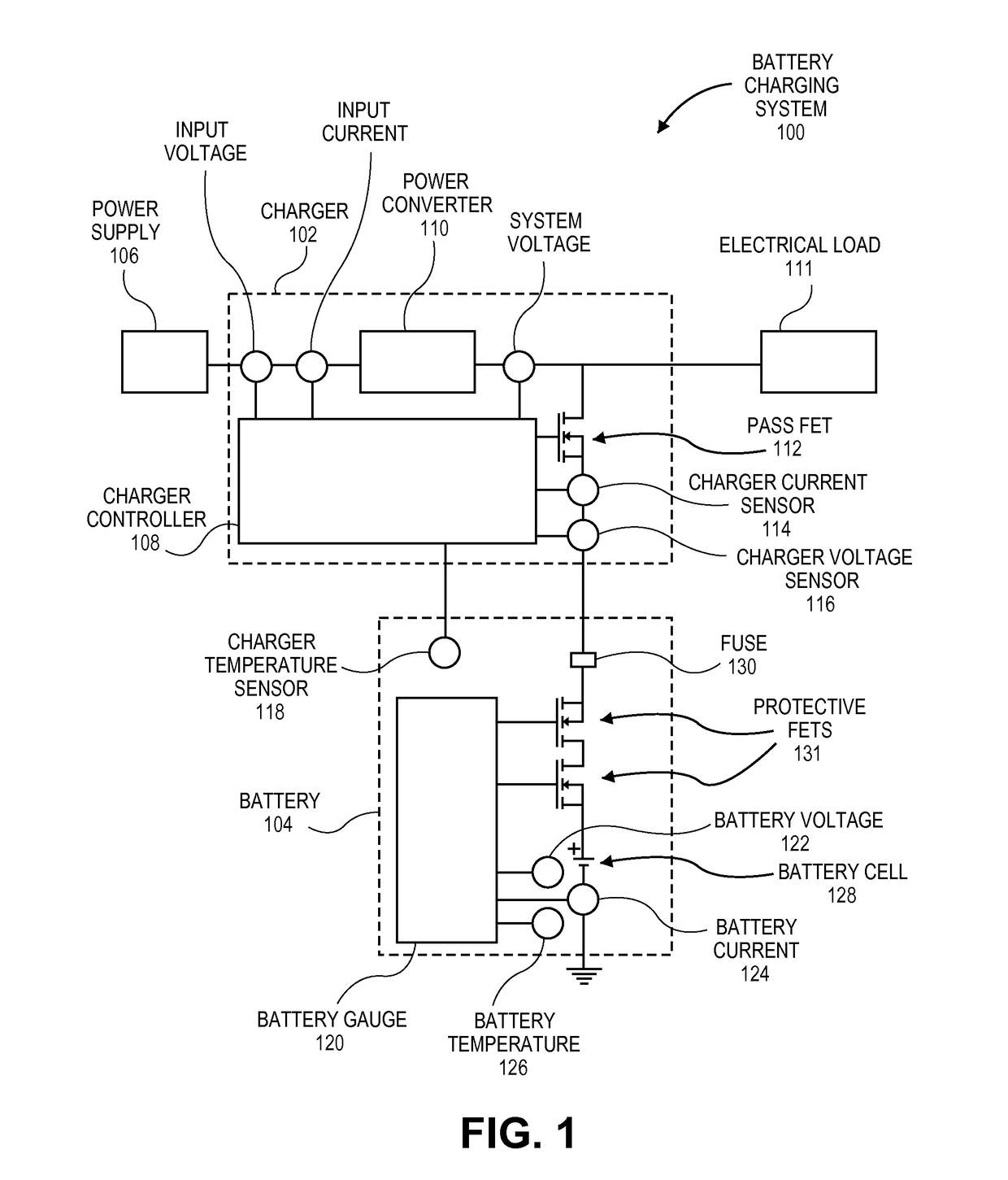Battery charger with gauge-based closed-loop control
a battery charger and closed loop technology, applied in batteries, battery data exchange, instruments, etc., can solve the problems of introducing unnecessary complexity, additional system cost, and measurement accuracy of charger sensors, so as to prevent integral wind-up in the pid control scheme, reduce cost, and reduce the effect of precision
- Summary
- Abstract
- Description
- Claims
- Application Information
AI Technical Summary
Benefits of technology
Problems solved by technology
Method used
Image
Examples
Embodiment Construction
[0022]Embodiments of the invention are battery charging systems for use in electronic devices powered by batteries. While some embodiments are described with specific regard to integration within portable electronic devices, the embodiments are not so limited, and certain embodiments may also be applicable to other uses. For example, one or more of the embodiments described below may be integrated within devices or apparatuses that are powered by batteries, regardless of whether the devices or apparatuses typically operate at a single location.
[0023]In various embodiments, description is made with reference to the figures. However, certain embodiments may be practiced without one or more of these specific details, or in combination with other known methods and configurations. In the following description, numerous specific details are set forth, such as specific configurations, dimensions, and processes, in order to provide a thorough understanding of the embodiments. In other insta...
PUM
 Login to View More
Login to View More Abstract
Description
Claims
Application Information
 Login to View More
Login to View More - R&D
- Intellectual Property
- Life Sciences
- Materials
- Tech Scout
- Unparalleled Data Quality
- Higher Quality Content
- 60% Fewer Hallucinations
Browse by: Latest US Patents, China's latest patents, Technical Efficacy Thesaurus, Application Domain, Technology Topic, Popular Technical Reports.
© 2025 PatSnap. All rights reserved.Legal|Privacy policy|Modern Slavery Act Transparency Statement|Sitemap|About US| Contact US: help@patsnap.com



